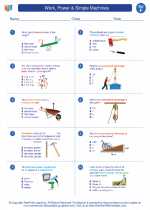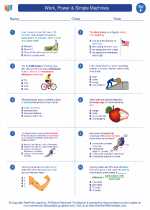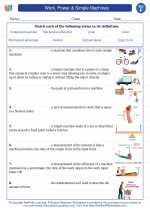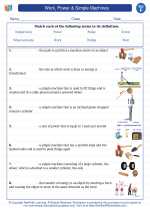Interference in Science
Interference in science refers to the interaction of two or more waves that results in a new wave pattern. When waves meet, they can overlap and combine in various ways, leading to a range of interesting phenomena.
Types of Interference
There are two main types of interference: constructive interference and destructive interference.
- Constructive Interference: Occurs when two waves meet and their amplitudes add together. This results in a new wave with a greater amplitude.
- Destructive Interference: Occurs when two waves meet and their amplitudes subtract from each other. This results in a new wave with a smaller or zero amplitude.
Applications of Interference
Interference plays a crucial role in various scientific fields and everyday phenomena, including:
- Optics: Interference of light waves is used in devices such as interferometers to make precise measurements.
- Acoustics: Interference of sound waves can lead to the phenomenon of beats, which is used in tuning musical instruments.
- Radio communication: Interference of radio waves can affect the quality of wireless communication.
Study Guide: Interference
Key Concepts to Understand:
- The definition of interference and how it relates to the interaction of waves.
- The difference between constructive and destructive interference and how they affect wave amplitudes.
- Real-world applications of interference in various scientific fields.
Practice Questions:
- What is interference in the context of waves?
- Explain the difference between constructive and destructive interference.
- How is interference used in the field of optics?
Hands-On Activities:
1. Conduct an experiment to demonstrate constructive and destructive interference using water waves in a ripple tank.
2. Build a simple interferometer using everyday materials to observe interference patterns of light waves.
.◂Science Worksheets and Study Guides Sixth Grade. Work, Power & Simple Machines
Worksheet/Answer key Work, Power & Simple Machines
Work, Power & Simple Machines  Worksheet/Answer key
Worksheet/Answer key Work, Power & Simple Machines
Work, Power & Simple Machines  Worksheet/Answer key
Worksheet/Answer key Work, Power & Simple Machines
Work, Power & Simple Machines  Vocabulary/Answer key
Vocabulary/Answer key Work, Power & Simple Machines
Work, Power & Simple Machines  Vocabulary/Answer key
Vocabulary/Answer key Work, Power & Simple Machines
Work, Power & Simple Machines 

 Worksheet/Answer key
Worksheet/Answer key
 Worksheet/Answer key
Worksheet/Answer key
 Vocabulary/Answer key
Vocabulary/Answer key
 Vocabulary/Answer key
Vocabulary/Answer key

The resources above cover the following skills:
Reading Standards for Literacy in Science and Technical Subjects
Craft and Structure
Determine the meaning of symbols, key terms, and other domain-specific words and phrases as they are used in a specific scientific or technical context relevant to grades 6-8 texts and topics.